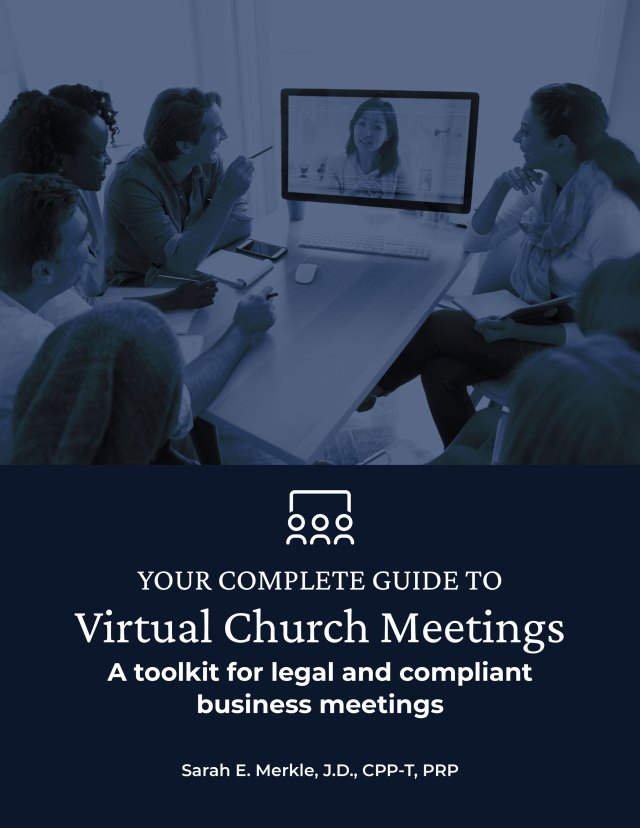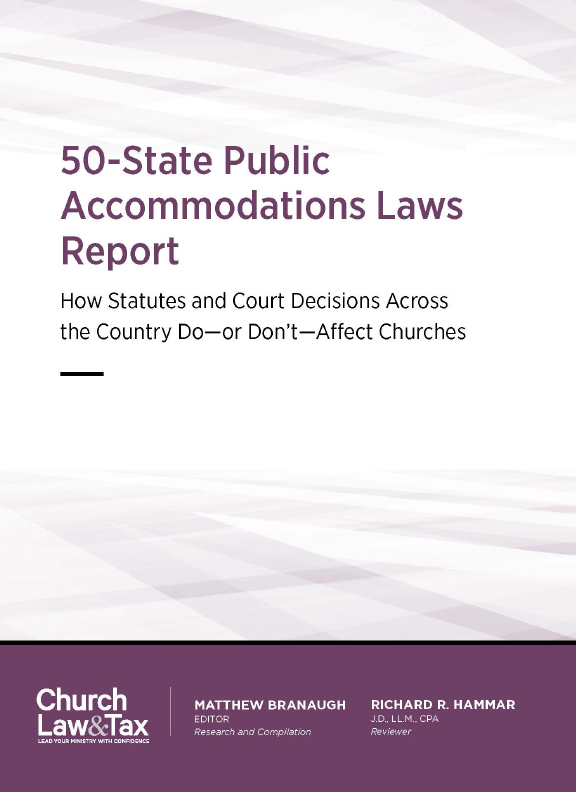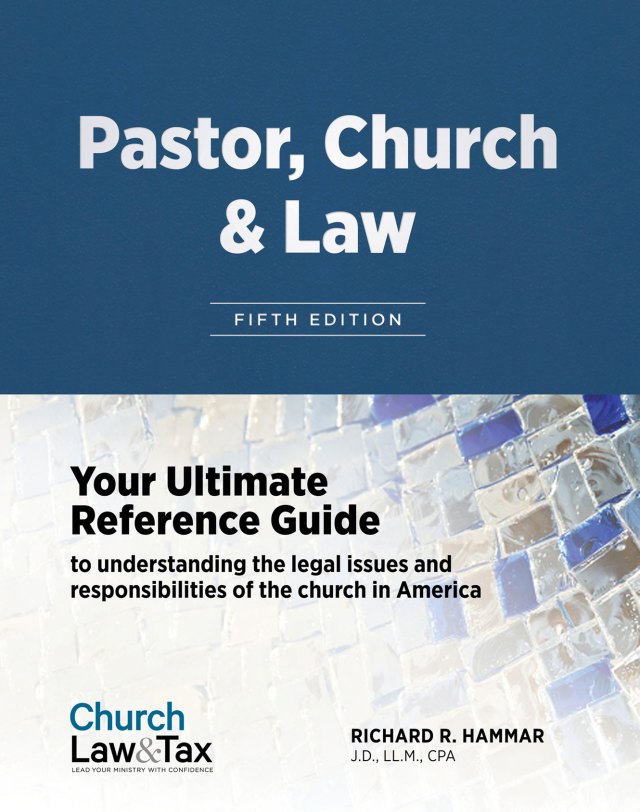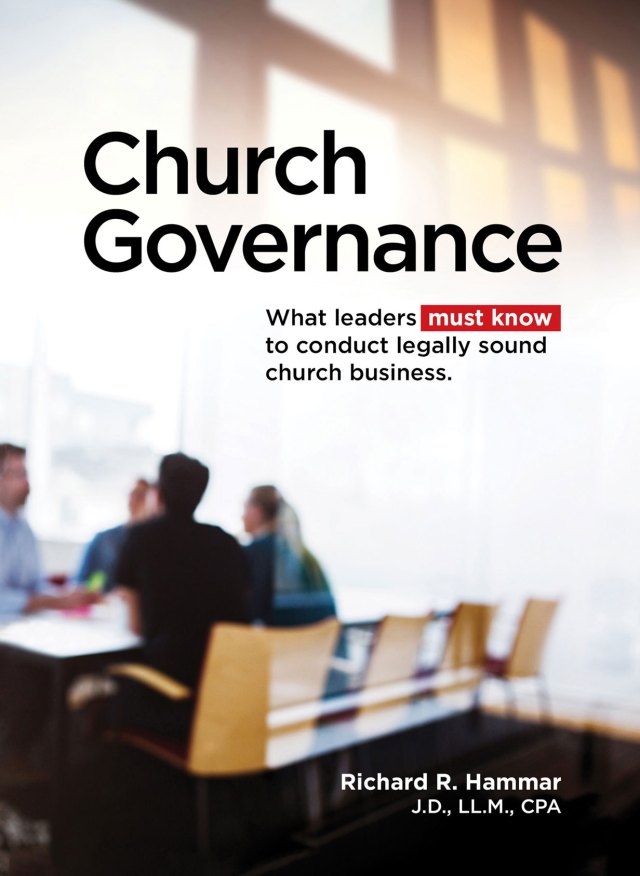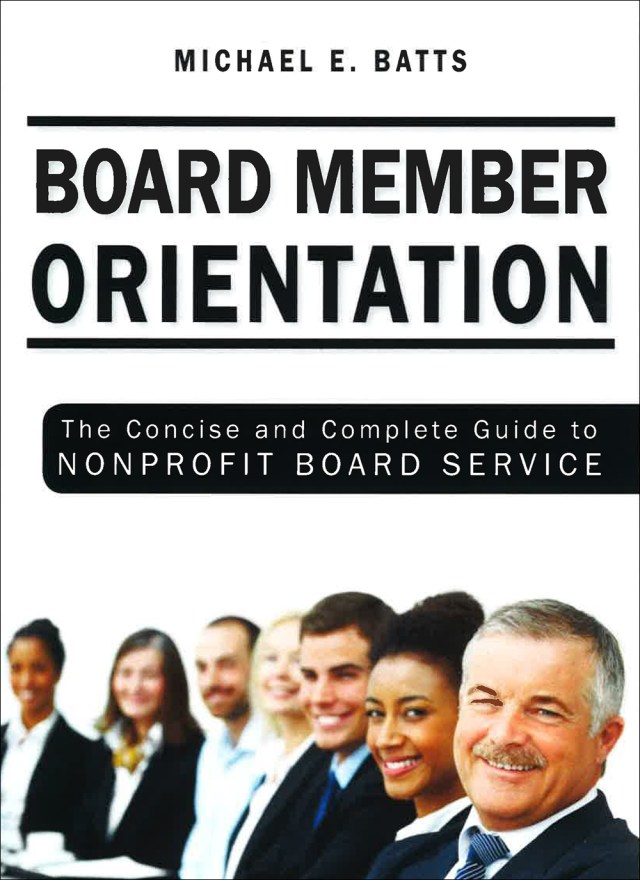Key point 6-02.2. Churches are subject to the provisions of their governing documents, which generally include a charter and a constitution or bylaws (in some cases both). A charter is the state-approved articles of incorporation of an incorporated church. Most rules of internal church administration are contained in a constitution or bylaws. Specific and temporary matters often are addressed in resolutions. If a conflict develops among these documents, the order of priority generally is as follows—charter, constitution, bylaws, and resolutions.Key point 6-06.4. Church officers and directors can be removed from office in the manner authorized by the church’s governing documents. It is common for church bylaws to give the membership the authority to remove officers and directors who engage in specified misconduct or change their doctrinal position.
Key point 6-12.1. Church membership meetings must be conducted in accordance with the procedural requirements ordinarily specified in the church’s governing documents. The most common requirements pertain to notice, quorum, and voting.
The Idaho Supreme Court ruled that a church’s failure to follow its bylaws in the selection of a pastor, the resignation of two board members, and the conduct of a specially called business meeting, rendered these actions null and void.
Selection of a pastor
A dispute arose in a church over the appointment of a pastor and the resignation of two board members. The church’s bylaws addressed the selection of a pastor as follows:
Section 4. Vacancy: In the event of a vacancy in the senior pastorate, a pastor shall be selected in the following manner:
The board of directors shall immediately convene and assign one of the associate pastors as a temporary replacement for the senior pastor. A roster of candidates shall be presented to the board of directors for review of their scriptural qualifications. Upon acceptance of qualification, each candidate will present themselves to the voting membership. After the voting membership has had an opportunity to review all candidates set forth by the board of directors, a special meeting will be called and a vote will be taken, with a majority vote required for the final appointment of the new senior pastor.
The court noted that there was no evidence that the pastor was ever voted on by the membership. Rather, the only evidence was that he had been asked when meeting with the church board if he would be interested in serving as pastor, and he replied that he was. The court concluded that “this was not sufficient evidence for a finding that he was properly appointed as the senior pastor.” Because there was no evidence that the bylaws were complied with, the pastor’s appointment was not valid.
The court stressed that the bylaws of a corporation are “equivalent to contracts among the members” and are binding on its members, and therefore “actions taken in violation of a corporation’s bylaws are void.”
Resignation of board members
Another issue before the court was whether two of the church’s three board members had effectively resigned their positions. The only evidence that one of these board members had resigned was his statements to the other board members, and some church members, that he “no longer wanted to be on the board.”
The court quoted the following provision in the state nonprofit corporation law: “A director may resign at any time by delivering written notice to the board of directors, its chairman, or the corporation.” I.C. § 30-3-69(1).
The court explained: “Although a director may resign at any time, the exclusive method for doing so is by delivering written notice… .” The court noted that neither of the two board members who allegedly resigned “ever submitted a written resignation. Accordingly, there is no evidence to support the … [conclusion that they had resigned.]”
The court then addressed the argument that these two board members had effectively resigned by absenting themselves from the board:
We note that absence from board meetings is only grounds for removal of a director when specifically provided for in the corporate documents. Here, there is no such provision in the bylaws or articles. The bylaws do, however, allow for removal of a director “by a unanimous vote of the remaining board members” regardless of whether the director has been absent from board meetings. However, there is no evidence in the record that such a vote took place.
Furthermore, the court found that no board meetings took place for the previous four months and so “there were no board meetings to be absent from.”
In conclusion, “because there was no evidence in the record to support a finding that [the two board members] ever tendered a written resignation or absented themselves from the board,” they did not cease to be members of the board.
Special meeting
Following the alleged “resignation” of two of the board’s three members, the remaining member called a special meeting of the church membership at which two new members were selected. The validity of this special meeting was contested on the ground that the meeting could not be called by one board member.
The court quoted the state nonprofit corporation law regarding the calling of special membership meetings:
(1) A corporation with members shall hold a special meeting of members: (a) On call of its board or the person or persons authorized to do so by the articles or bylaws; or (b) Except as provided in the articles or bylaws of a religious corporation if the holders of at least ten percent (10%) of the voting power of any corporation sign, date and deliver to any corporate officer one (1) or more written demands for the meeting describing the purpose or purposes for which it is to be held. I.C. § 30-3-47.
The church’s bylaws address special meetings as follows: “Special meetings of the voting membership may be called by or at the request of two-thirds (2/3) of the voting membership… . Notice of the annual, regular, or and (sic) special meeting of the voting membership shall be given by oral notice at three consecutive Sunday services. The business to be transacted at the meeting need not be specified in the notice, unless specifically required by law or these bylaws.”
In this case, the court noted, “no membership roster was kept… . Thus, calling the special meeting at the request of two-thirds of the voting membership was not possible. Consequently, the only method available to call the special meeting was on call of [the church’s] board as provided under” state law (quoted above). And, while the church’s bylaws were silent as to what constitutes an act of the board, the nonprofit corporation law specifies that “an act of the board occurs when a quorum is present and the majority of directors vote in favor of such act.” Since two of the church’s three board members had not resigned, a “majority of directors” consisted of two or three of the board’s three members. Therefore, the special meeting of the church membership could not be lawfully called by one board member. The court concluded: “Here … the meeting was not called by the majority of directors in office and therefore was improperly called [and consequently] any action taken at the special meeting, including the election of new directors, was void.”
What this means for churches
This case raises the following important points.
First, a church’s governing documents must be followed in the selection of pastors. The court concluded that the church’s failure to follow its bylaws in the selection of its senior pastor rendered his selection invalid. While not all courts would agree with this conclusion, it is not without precedent, and at a minimum should encourage church leaders to be sure that all pastoral selections comply with the church’s governing documents.
Second, and perhaps most importantly, the court ruled that board members do not cease to be members of the board by informing others that they no longer want to serve in that capacity. Rather, board members remain on the board until they cease to be members pursuant to the terms of the church’s governing documents, or the provisions of the nonprofit corporation law under which the church is incorporated. But nonprofit corporation law generally applies to issues of church administration only with respect to matters not addressed in the church’s governing documents, as was the case here. The court concluded that the procedure for a board member’s resignation described in the state nonprofit corporation law had not been followed, and so the two members who allegedly had resigned had not done so and remained on the board.
Knowing with certainty when a board member ceases to be a member of the board is of utmost importance, since board members generally cease to be liable for the actions of the board after they have resigned. If there is doubt or ambiguity regarding a board member’s status, this means that such a person may be exposed to continuing liability for board decisions over which he or she exercised no control. As a result, church leaders should review their governing documents to see if the procedure for resignation is clearly specified so there is no ambiguity regarding the timing of a board member’s resignation. The same goes for the end of a term of office. If a church’s governing documents are clear, then nonprofit corporation law will not be invoked.
Third, the court concluded that actions taken at a special business meeting that was not called according to the procedure described in a church’s governing documents are null and void. The court concluded: “Here … the meeting was not called by the majority of directors in office and therefore was improperly called [and consequently] any action taken at the special meeting, including the election of new directors, was void.” Again, the failure of church leaders to ensure that the church’s governing documents are followed in the notice and conduct of a membership meeting can lead to the invalidation of actions taken. Kemmer v. Newman, 387 P.3d 131 (Ida. 2017).
